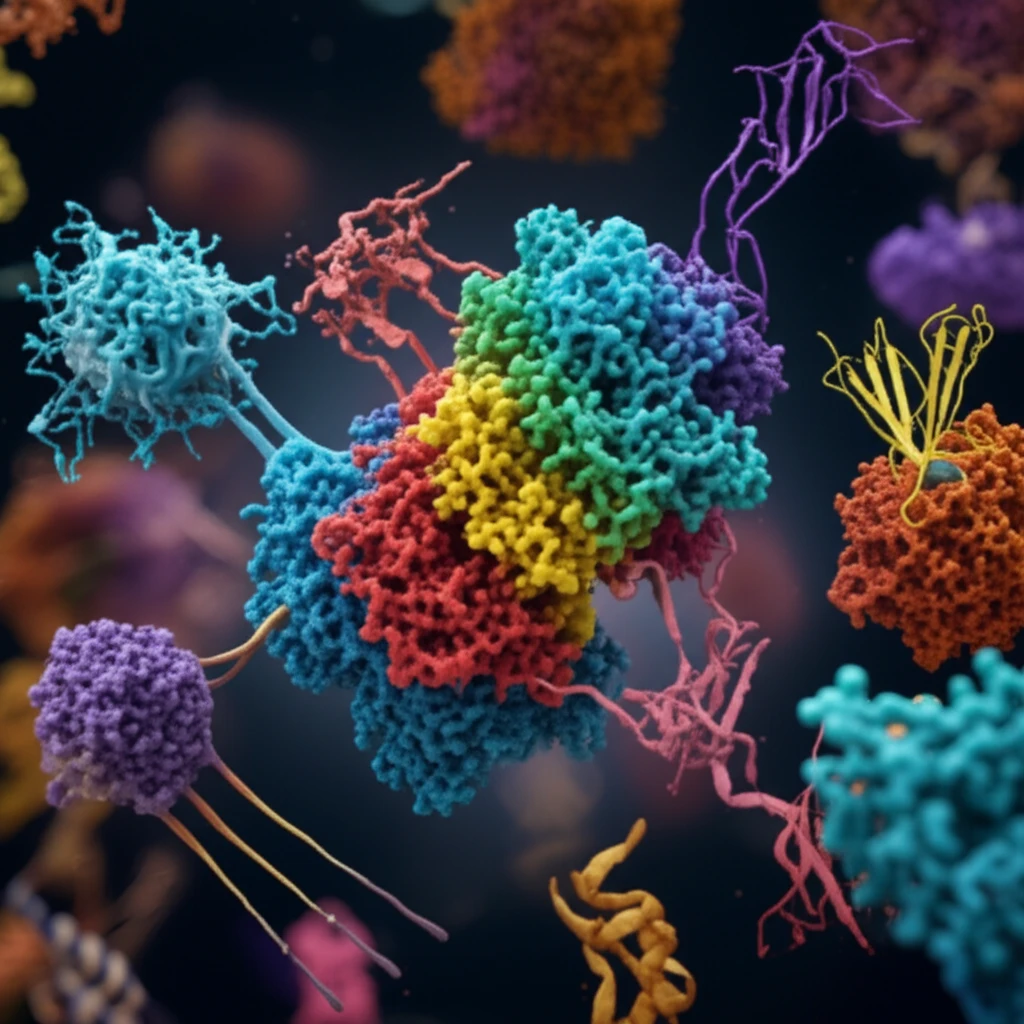
DCAF1: The Unsung Hero in Cellular Processes
"Emerging roles of a dual-service E3 ubiquitin ligase substrate receptor"
In the intricate world of our cells, proteins are constantly being modified to control nearly every biological process, and at the heart of this dynamic regulation lies a process called ubiquitylation, a widespread and evolutionarily conserved form of post-translational modification. Ubiquitylation involves a carefully orchestrated molecular dance where a small protein tag, ubiquitin, is attached to target proteins, dictating their fate and function.
Enter Cullin-RING ligases (CRLs), a massive family of enzymes acting as master organizers of ubiquitylation. Among them, CRL4 ligases stand out for their role in development, cancer progression, and their clever manipulation by viruses. These CRL4 ligases depend on DDB1-Cul4 associated factor 1 (DCAF1), a versatile protein that directs these enzymes to specific target proteins within the cell.
DCAF1, also known as VprBP, plays a dual role within cells, using CRL4 E3 ligase, as well as another HECT-type E3 ligase with which DCAF1 also associates, called EDD/UBR5. This article explores the diverse physiological roles of DCAF1 in supporting various general and cell type-specific cellular processes in its context with the CRL4. We will delve into recent advances in understanding its structure, function, and the critical roles it plays in everything from cell division and growth to immune responses and even the development of certain cancers.
DCAF1's Orchestration of Cellular Life: Cell Cycle, Growth, and Survival

DCAF1's influence extends to fundamental processes like cell cycle progression, growth, and survival. Research indicates that DCAF1 normally acts as a brake on p53, a crucial protein that suppresses tumors. When DCAF1 is reduced, p53 levels surge, activating genes that can halt cell division or trigger cell death. Conditional inactivation of Dcaf1 in T lymphocytes, supports this finding. Inactivation was found to stabilize p53 levels, and increase levels of p21 and the pro-apoptotic protein Bax.
- Cell Cycle Regulation: Controls the pace at which cells divide, ensuring orderly growth.
- Cell Growth: Influences cell size and resource allocation for proper function.
- Cell Division: Oversees the accurate separation of chromosomes during cell division, preventing errors.
- Cell Survival: Promotes conditions that allow cells to thrive and resist programmed cell death.
The Future of DCAF1 Research: Untangling the Remaining Mysteries
Since its discovery nearly two decades ago, DCAF1 has emerged as a key player in numerous cellular processes, a true multi-functional protein using both CRL4DCAF1 and EDVP complexes. It orchestrates everything from cell growth and division to immune responses and oocyte development.
The studies discussed in this review also raise many new questions that remain to be addressed. One outstanding issue is how association of DCAF1 with CRL4 versus EDVP is controlled. Though experimental evidence is lacking, an obvious possibility is post-translational modification of DCAF1, DDB1, or both.
The journey to fully understand DCAF1's role is ongoing, but the progress made so far offers promise for future discoveries. As we unravel its secrets, we may find new ways to treat diseases, manipulate cellular processes, and ultimately improve human health.
